Ah, Chelsea. It’s a name that appears in many songs, but of course not everyone is about the Chelsea of SW3. For example, Joni Mitchell’s Chelsea Morning with the sun pouring in like butterscotch would never be London and neither could Leonard Cohen’s Chelsea Hotel, which is definitely New York. However Elvis Costello is not wanting to go to Chelsea, London.
But there is one song with a Chelsea reference which could be either New York or London and that is the title song of the Musical “Cabaret”. It is a song sung by Sally Bowles who used to share some sordid rooms in Chelsea with her old girlfriend Elsie. In the 1972 movie version Sally was played by Liza Minnelli as an american, as you would expect. But the original stage musical had Sally Bowles as an English girl, as it was in the 1951 stage play “I am a Camera” and the Christopher Isherwood’s 1937 novella “Sally Bowles”, the original source of the character. It is hard to believe the role was played by Judi Dench in the original London stage production of Cabaret, the musical, in 1968. However the fact the song was written by two americans is rather given away by the line about when Elsie died and: “the neighbo(u)rs came to snicker”. Even today I doubt whether English people snicker.
So we start at the Post Office in King’s Road SW3, which is in a rather depressing little mini mall called King’s Walk. You can tell when a shopping centre is not doing well when the anchor store is a Charity Shop.
Cross the road outside (there is a Zebra crossing) and then slightly to your left ahead of you and running off King’s Road is Royal Avenue
Stop 1: Royal Avenue
This looks so un-English – it is quite like the open spaces you get in Paris, but not quite.
Royal Avenue is a broad avenue with a road down each side and the central area of gravel with two lines of trees between the gravel and each road. A blue sign almost at the far end on the right side explains all. This road was laid out by Sir Christopher Wren in 1682 as part of a planned direct route from the Royal Hospital to Kensington Palace. King Charles II, the sponsor, died in 1685 and so the full scheme was never built. The houses on either side are according to this plaque early 19th century.
We continue to the end. You can see the famous Royal Hospital though the gates of Burton Court but as in the SW1 walk we are eschewing the big ticket items for the small and (hopefully) more interesting. At the end turn right in St Leonard’s Terrace

Stop 2: St Leonards Terrace
A very pleasant street with the first of the many Blue Plaques we shall see today. On the right hand side as we walk is No 18 where Bram Stoker lived
Bram Stoker was an Irish novelist and short story writer who is of course best known today for his 1897 Gothic novel Dracula. During his lifetime, he was better known as personal assistant of actor Henry Irving and business manager of the Lyceum Theatre in London, which Irving owned. And if you are wondering how he got the name Bram – it turns out to be a shortening of Abraham. Obviously really, but until someone points it out you don’t know!
Continue along St Leonards Terrace until Tedworth Square
Stop 3: Tedworth Square
This is a lovely little square marred a bit by modern buildings on the north side. In the middle a small private gated garden under the care of the Cadogan Estate – there are numerous of these garden squares hereabouts but this one must be one of the smallest – if not the smallest.
On the south side near the corner with Tite Street is our next Blue Plaque – to Samuel L Clements, better known as Mark Twain, who lived here 1896 – 1897
Recently the Guardian newspaper ran one of its “in praise of” editorials about telegrams to note the passing of the Indian Telegram service. They quoted some examples of how great telegrams could be including an exchange between Mark Twain and his publisher:
Publisher: NEED 2 PAGE SHORT STORY TWO DAYS
Mark Twain: NO CAN DO TWO PAGES TWO DAYS. CAN DO 30 PAGES TWO DAYS. NEED 30 DAYS TO DO 2 PAGES
Writing this blog I can feel some sympathy with this, especially here in SW3 where there is so much to say!
Walk down Tite Street, note the old street sign at the corner of Christchurch Street – this has only SW with no number and so presumably predates the first world war.
The Royal Borough of Kensington and Chelsea have replaced most of the old street name signs but occasionally you will see one of these really old ones and sometimes there are ones which have Borough of Chelsea along the top and so predate the forming of the Royal Borough in 1965.
Keep walking along Tite Street until you get to the section beyond Royal Hospital Road
Stop 4: Tite Street
Tite Street was laid out in 1877 by the Metropolitan Board of Works (MBW) to give access to Chelsea Embankment. It named after Sir William Tite, an architect whose most famous building is probably the Royal Exchange in the city but he also designed many railway stations including the original London terminus of the London, South Western Railway at Vauxhall (Nine Elms). He had been a member of the MBW. He died in 1873 so presumably this was a kind of recognition by the MBW.
We are focussing on the stretch of Tite Street between Royal Hospital Road and Chelsea Embankment which was a bit of an artist’s colony in the late 19th century. You have a blue plaque for Oscar Wilde at number 34. It was here at Tite Street where the Marquis of Queensberry came in June 1894 to confront Wilde about his relationship with Queensberry’s son Lord Alfred Douglas. This was the start of a chain of events which lead to Wilde pursuing a case of libel against Queensberry which in turn precipitated the trial and imprisonment of Oscar Wilde for sodomy and gross indecency.
Across the road a little way down at numbers 31 and 33 is a stone plaque which relates that John Singer Sargeant lived and worked here. Strangely this is not a Blue Plaque
But the one gap is where Number 35, the White House, once stood. In 1877, the painter James McNeill Whistler commissioned architect and designer, Edward William Godwin to build a house for him here. But Whistler was never able to occupy it. Whistler had a rancorous legal dispute with the writer John Ruskin over the painting called Nocturne in Black and Gold: The Falling Rocket. Ruskin criticised it saying: “I have seen, and heard, much of Cockney impudence before now; but never expected to hear a coxcomb ask two hundred guineas for flinging a pot of paint in the public’s face.” Although Whistler won the case, he only got one farthing (¼ old penny) damages leading to his bankruptcy in 1879.
The building was demolished in 1968 and as far as I can see there is no sign anywhere in Tite Street to show it ever existed.
When you reach Dilke Street turn right and continue to the end then turn right into Swan Walk
Stop 5: Chelsea Physic Garden
In Swan Walk you will find the entrance to Chelsea Physic Garden. This was set up by the Worshipful Society of Apothecaries in 1676 with the purpose of training apprentices in identifying plants.
The location was chosen as the proximity to the river created a warmer microclimate allowing the survival of many non-native plants. Cedar trees were planted here in 1683, and it is believed this was the first place they were grown in England. In 1712 Dr. Hans Sloane purchased the Manor of Chelsea from Charles Cheyne and this included the 4 acre garden. Hans and Sloane pop up in various local street names which are on land he once owned, as of course does Cheyne.
Sloane had studied at the Garden in his youth, and was sympathetic to the Apothecaries who were struggling with its upkeep. Sloane granted the Apothecaries a lease on the land for a rent of £5 a year in perpetuity, on condition ‘it be for ever kept up and maintained as a physic garden’. A replica of the original statue of Sir Hans Sloane created by Michael Rysbrack in 1733 has pride of place at the centre of the Garden. The original, damaged by pollution, is now in the British Museum.
The garden is open to the public Tuesday – Friday and Sunday – 11am – 6pm. Adult entry price is currently £9. More info at: http://chelseaphysicgarden.co.uk/
At the end of Swan Walk turn left, cross the road and after Flood Street veer off to the right into Cheyne Walk.
Stop 6: Cheyne Walk (East)
And now for some more Blue Plaques (sorry!). At number 4 is one for the novelist George Eliot, then a little way further down is one which is shared by the painter Dante Gabriel Rossetti and the poet Algernon Swinburne who both lived at the house at Number 16.
Rossetti moved here after the death of his wife, Lizzie, from a drugs overdose in 1862 and he lived here for the best part of 20 years In the last years of his life Rossetti befriended an up and coming writer, Thomas Henry Hall Caine, who became quite well known as Hall Caine, and has now been totally forgotten. Hall Caine wrote about his friendship with Rossetti in a book “Recollections of Rossetti” first published in the 1880s and republished in 1928 for the anniversary of Rossetti’s birth. In this he tells the story of how a grief stricken Rossetti buried his notebook of poems dedicated to his wife in his wife’s coffin, only to have to have her body exhumed a few years later so he could recover the book. Hall Caine was also good friends with Bram Stoker, and in fact Dracula is dedicated to Hall Caine (but under the nickname “Hommy-Beg”!)
Stop 7: site of King Henry VII’s Manor House
A little further along Cheyne Walk between Numbers 23 and 24 Cheyne walk is an alley way with a sign saying this was the site of King Henry VIII’s Manor House.
Chelsea Manor is what gave Chelsea its name. It was acquired by Henry VIII in 1536. The young Elizabeth I of England lived here as a Princess between 1536 and 1548. Anne of Cleves also lived here and died there in 1557. There have been three different houses on the site, the last of which was demolished in 1825 by Earl Cadogan – the Cadogan Estate still retain ownership of property hereabouts as we saw in Tedworth Square Gardens.
Go down the alley a little bit and there is a sign to warn drivers of vehicles to walk their horses – by order. Not sure by order of whom – it does not say.
Keep going down Cheyne Walk, crossing over Oakley Street and making a short detour in to a small garden ahead
Stop 8: Cheyne Walk (middle)
Here you will soon come across a homely looking statue of Thomas Carlyle looking confortable in what looks like a dining room chair. He was a 19th Century Scottish philosopher and writer. He lived just down the street behind the statue at Number 24 Cheyne Row.
Go down Cheyne Row passing Carlyle’s House
The house was opened to the public in 1895, just fourteen years after Carlyle’s death. It is preserved very much as it was when Carlyle and his wife lived there despite another resident moving in after them with her scores of cats and dogs. The house is now owned by the National Trust and is open Tuesday – Sunday 11am – 5pm.
More info at: http://www.nationaltrust.org.uk/carlyles-house/
Go along Cheyne Row and at end turn left and follow St Lawrence Street round
Stop 9: St Lawrence Street
Just as you turn the corner is a square blue plaque set in the wall, which signifies that Chelsea China was made here. It was the first important porcelain factory in England starting in the 1740s. In 1769 it was bought by William Duesbury, owner of the Derby porcelain factory. He kept the factory until 1784. It was then demolished and its moulds, patterns and many of its workmen and artists transferred to Derby. So all that we have to remind ourselves of this bit of industrial history is this plaque.
At the end of St Lawrence Street turn right and you will see ahead of you Old Chelsea Church and its graveyard.
Stop 10 Chelsea Old Church and the Sloane Monument
This most prominent monument you come across is that of Sir Hans Sloane, who had such an important influence over this area.
The entrance of the Church is at the other end from the Sloane monument. The Church was badly damaged by bombing in 1941 and has been considerably reconstructed. Sir Thomas More had his private chapel built here in 1528 and there are lots of interesting monuments. It does open to the public on some afternoons see http://www.chelseaoldchurch.org.uk/

Just across the road from the Chelsea Old Church is a sunken garden, do venture in.
Stop 11 Roper’s Gardens
The story of this garden is a little sad. It was laid out as a garden in 1965 and is only here because the area was bombed. It is said this was Sir Thomas More’s orchard, but there is nothing to show of this. There are three to have a look at. First and most obvious a bronze figure, The Awakening” by Gilbert Ledward.
Then hidden away towards the church a little memorial to Gunji Koizumi, who was apparrently the father of British Judo.
And finally and most intriguingly an unfinished stone relief. It looks very like Epstein and if you go round the back you discover it is. It commemorates the fact that he lived and worked at a studio on this site from 1909 to 1914.
Walk down Old Church Street away from the river until you get back to King’s Road
Stop 12: Cineworld Cinema
Now you may be wondering why our final stop is a rather dull looking 4 screen cinema at the corner of King’s Road and Old Church Street. Well back in the 1970s this building was home to the stage musical, the Rocky Horror Show, for just over 5 years.
The show had started at the Royal Court’s 63 seat studio theatre with a run of a month from 19 June 1973. The cast included Tim Curry, Patricia Quinn, Nell Campbell (billed as Little Nell) and Julie Covington as well as Richard O’Brien, who wrote the book, music and lyrics. Record producer Jonathan King saw it on the second night and signed the cast to make the original cast recording over a long weekend that was rushed out on his UK Records label.
The production was so successful it transferred to the 230-seat Chelsea Classic Cinema, a little way down on Kings Road from 14 August 1973 to 20 October 1973. This cinema was being redeveloped (and is now a shop). So it then moved again to this building which at the time had around 500 seats. The name was changed to the King’s Road Theatre. At the end of its run at the King’s Road Theatre on 31 March 1979 it transferred to the Comedy Theatre (now the Harold Pinter Theatre). Here the show required some restaging as it was the first theatre that the musical had played at with a traditional proscenium arch stage. For the first time, the musical was also split into two acts with an interval. It finished its run there on 13 September 1980. It has been revived numerous times since and has been having a 40th anniversary tour in the UK. And of course there is the famous 1975 film which has also kept the show alive.
Sadly this building shows no sign of this little bit of history After Rocky Horror it went back to being a cinema, being successively known as the Classic, Cannon, UGC and finally now Cineworld.
And that brings us to the end of our SW3 walk – a walk where we have met a number of really famous people of the late 19th century, but also touched on how this area is much more historic that it first seems – with royal connections in the 16th century and innovative manufactury in the 18th century although there is little tangible left to see.
We are now on King’s Road and so there are plenty of buses for onward travel.


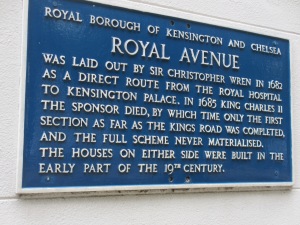

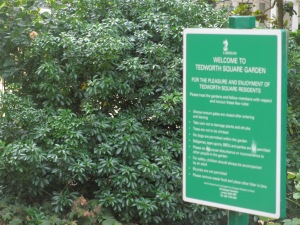

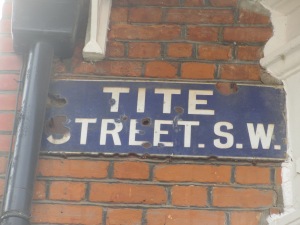








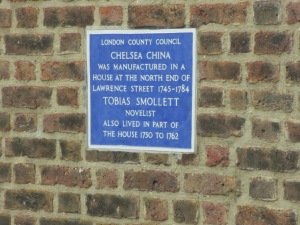
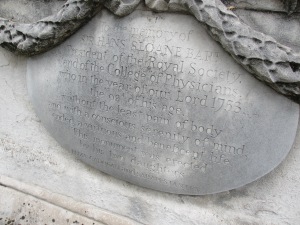

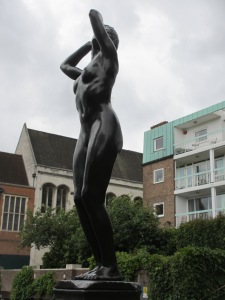
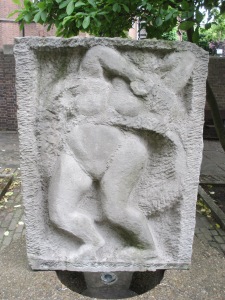

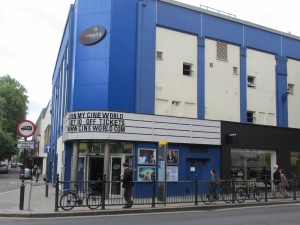
Nice page. I can send you some photos I made from the Kings Road Theatre hosting the Rocky Horror Show in 1979/80 if you like.
Thanks. Glad you liked my SW3. Yes, please do send pictures from 1979/80 Kings Road Theatre.
Your self-imposed rule is daft. The 12 stops you mention are all interesting. You probably won’t have as much in postcodes further out, as you say, and now you are leaving out as least as much as you have already written. Meanwhile, had you chosen to do the job thoroughly, I would have been very happy to promote your blog, but I cannot see folk in my half of SW3 being as interested as they would have been if you had covered SW3 thoroughly. There’s much more to SW3 than the south of the Kings Road.
I do understand your point but I felt I had to be selective in order to complete the task I set of creating a walk in every London postcode. If I had been really thorough, I would still be in SW1. I only covered a tiny piece of Westminster but SW1 also includes St James, Whitehall, Belgravia, Victoria and Pimlico which could all warrant detailed treatment. So maybe when I get to the end of one walk in each postcode, I can go round again and fill these gaps.
Really interesting, thanks. However, please do not forget that there is plenty of interest in SW3 that is on and to the north of the Kings Road and Sloane Square.
Thanks for the comment. I was really spoilt for choice as to where to go in SW3. But my self imposed rule of a maximum 12 stops lead me to stay south of Kings Road and even then I found I wrote more than I planned to. I doubt I will have the same abundance of riches in the postcodes which are further out!